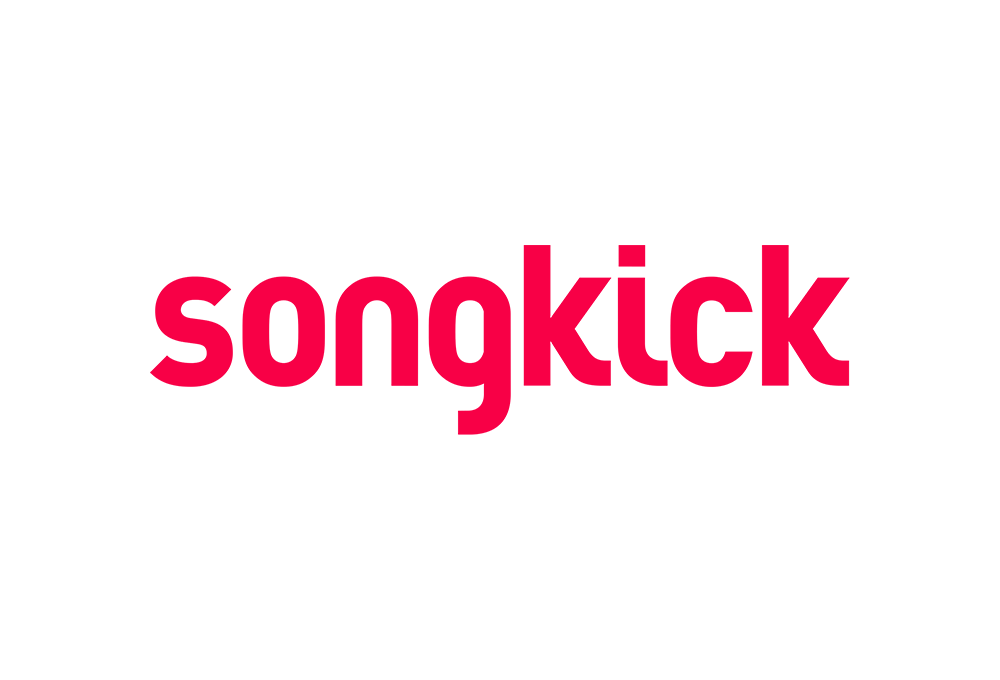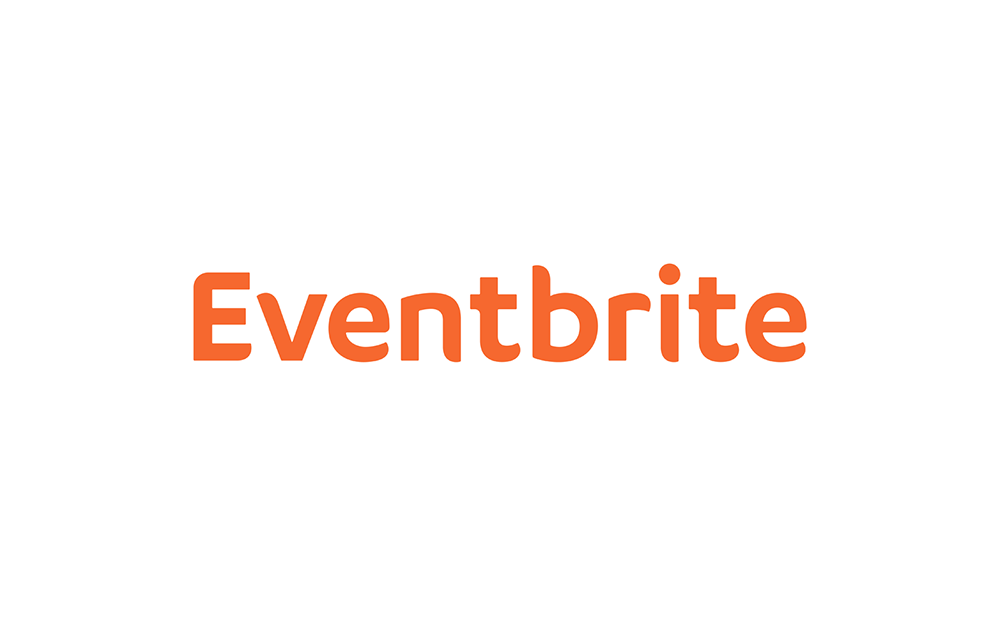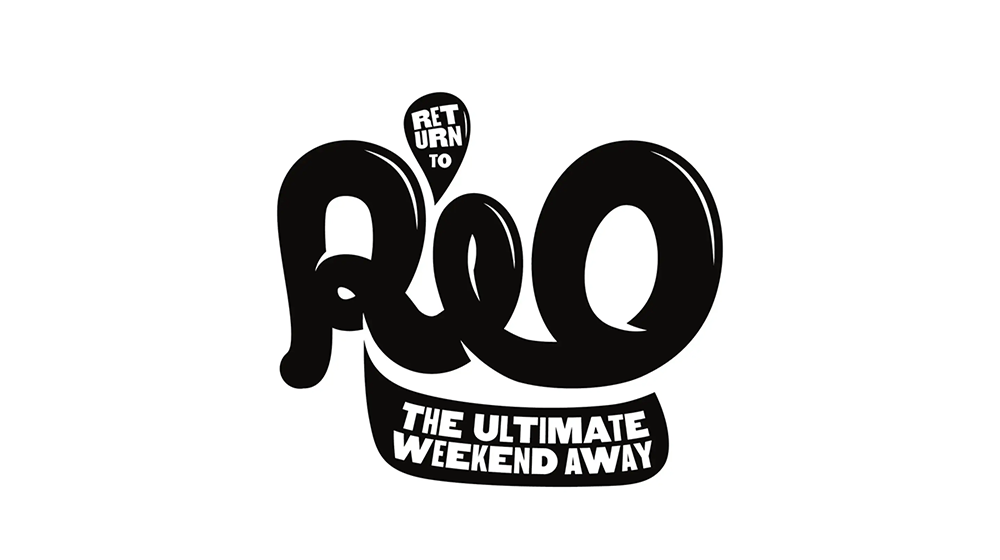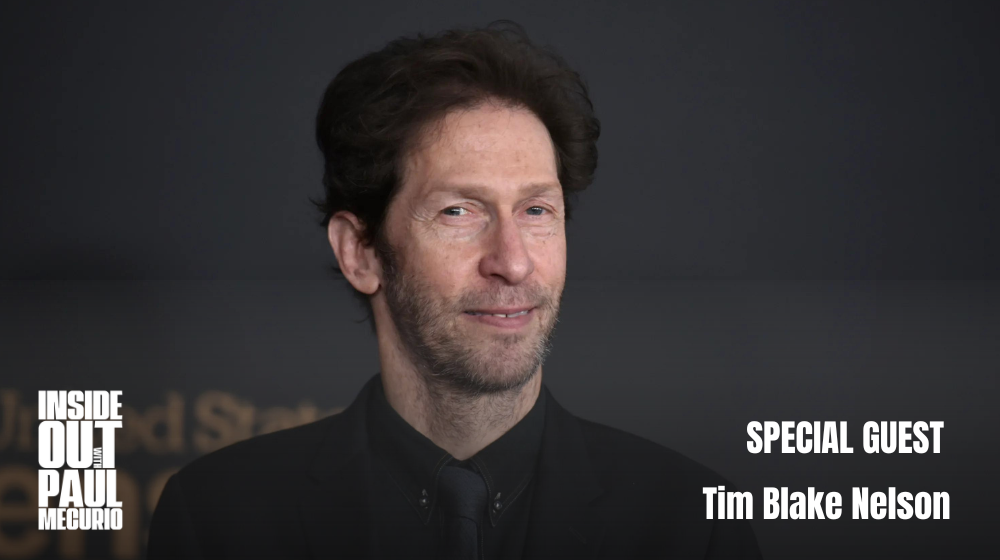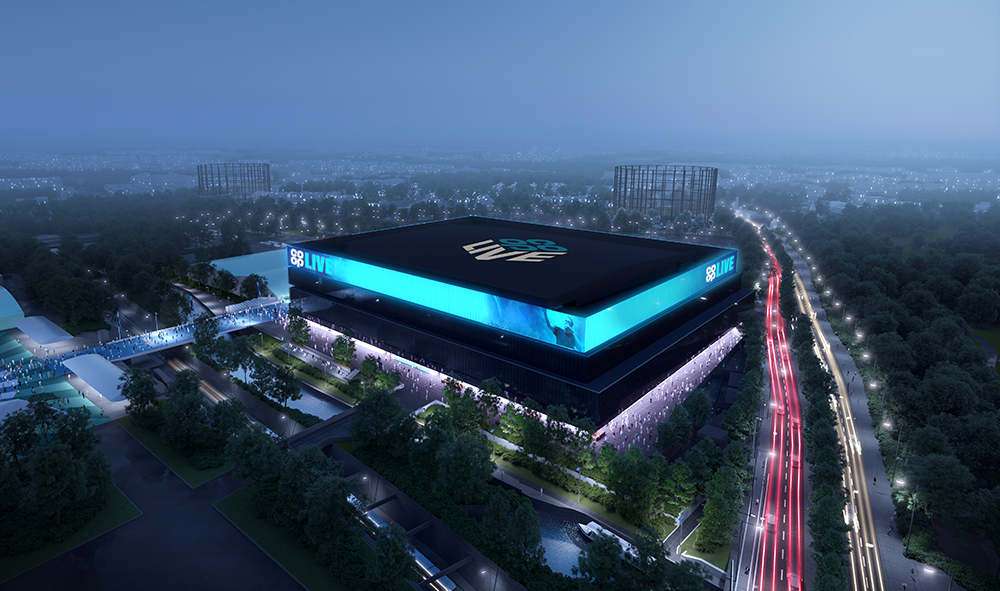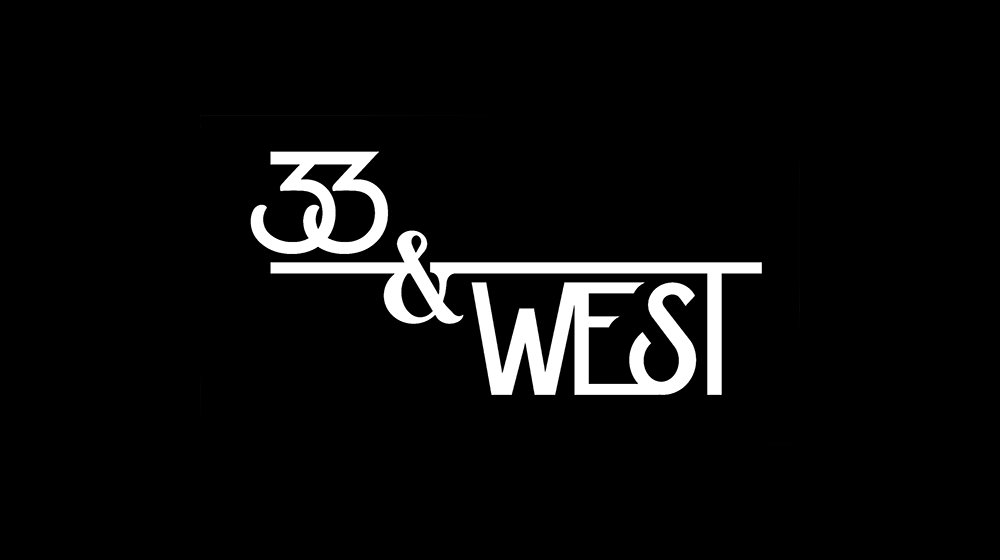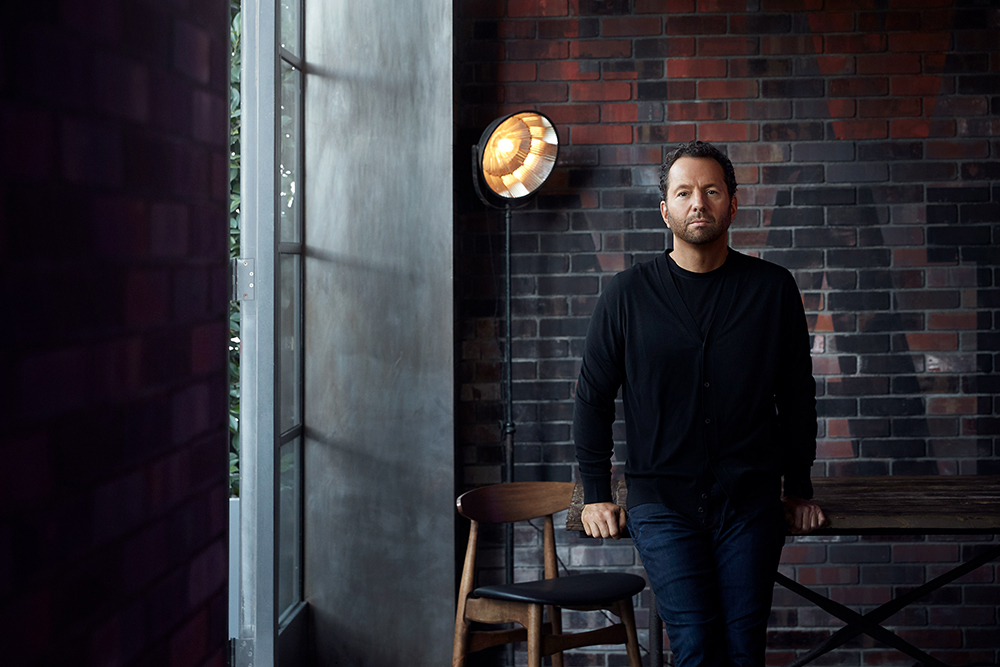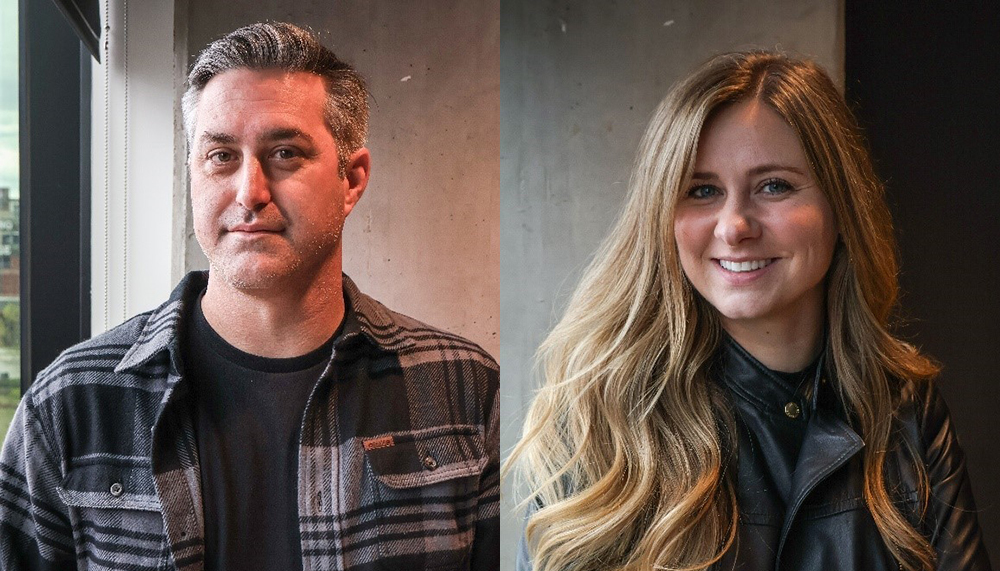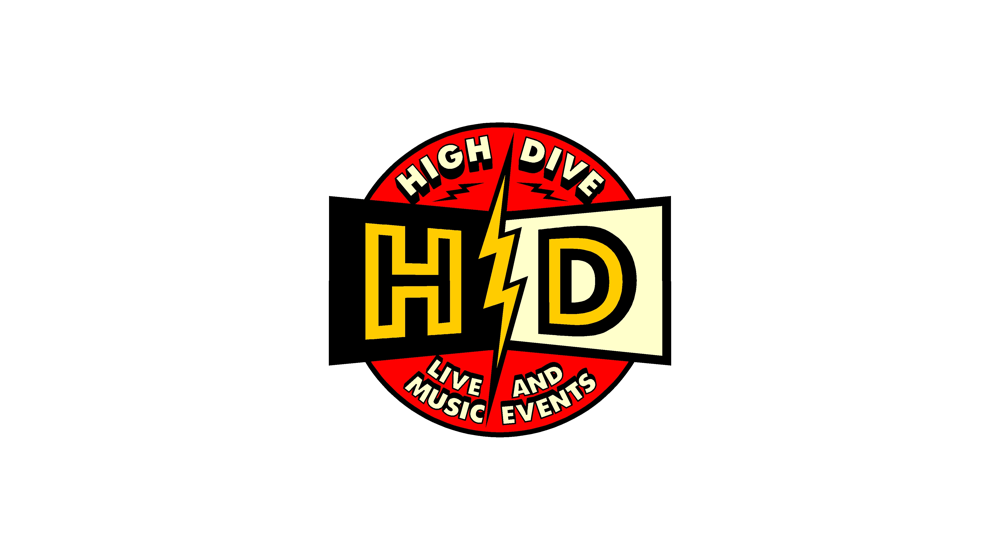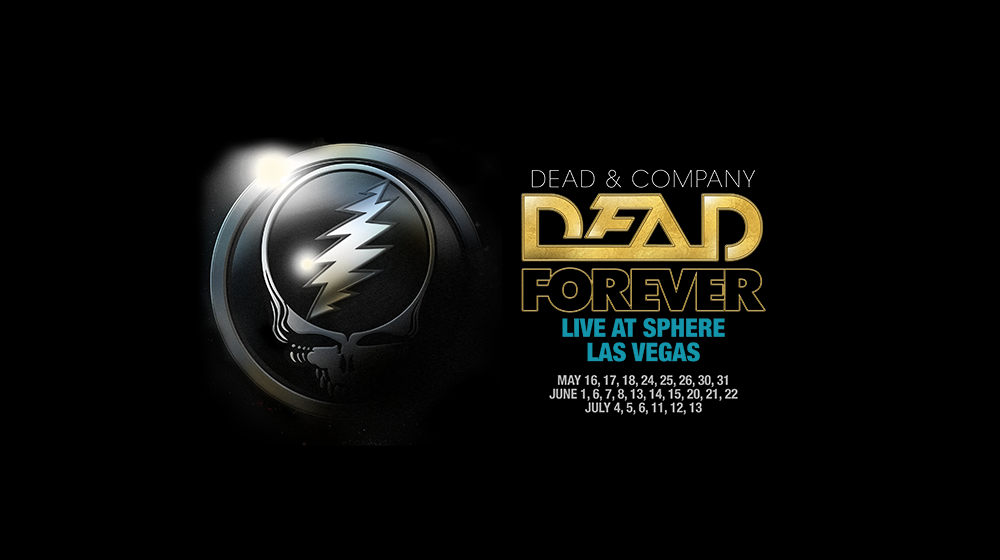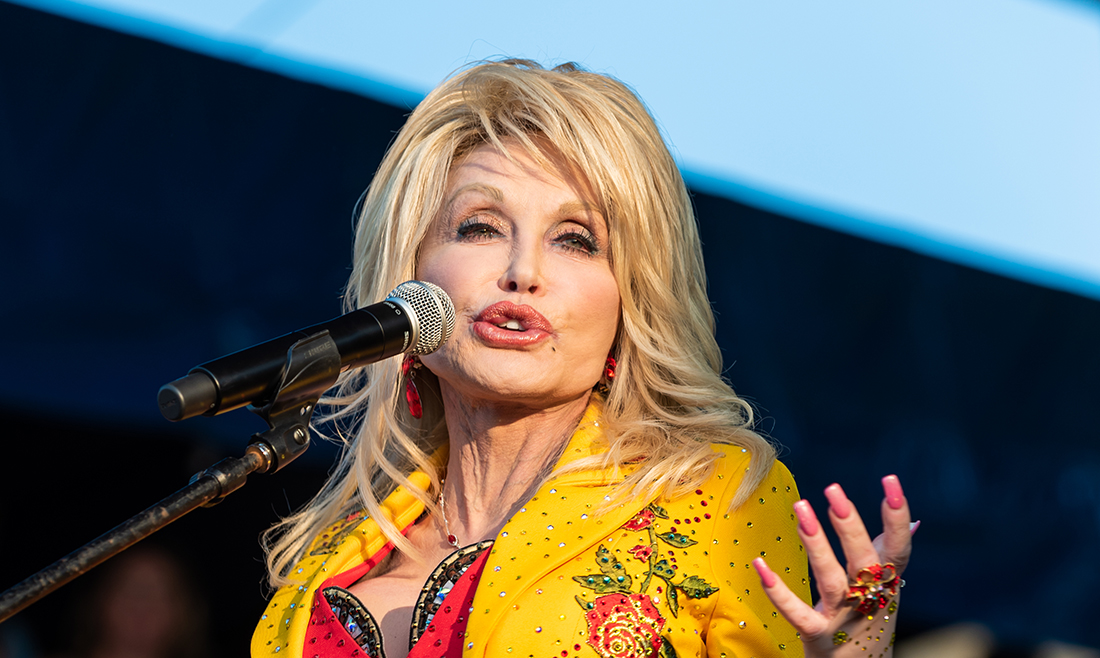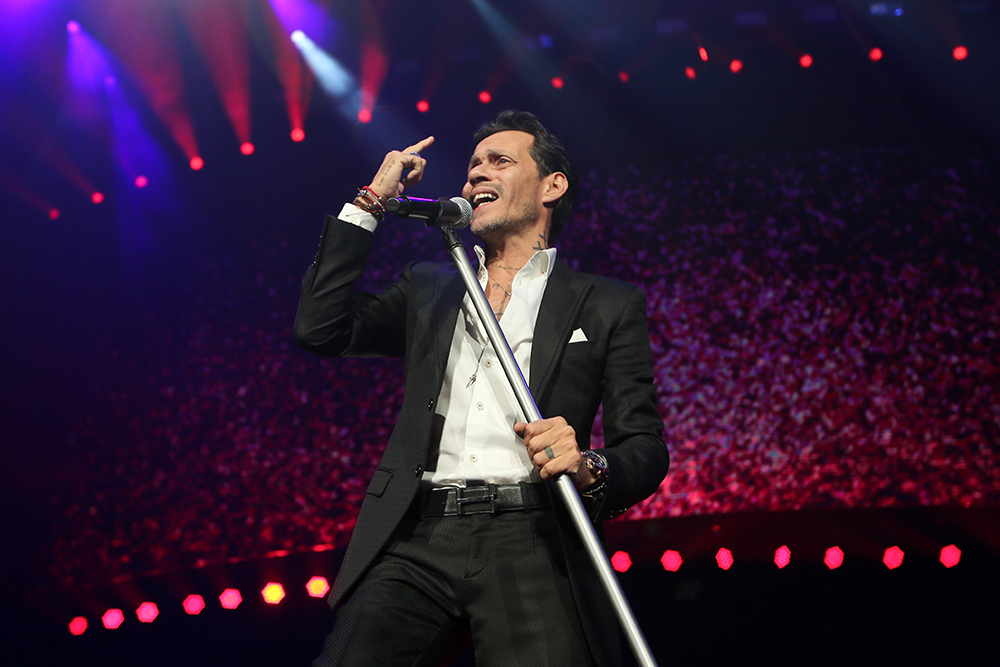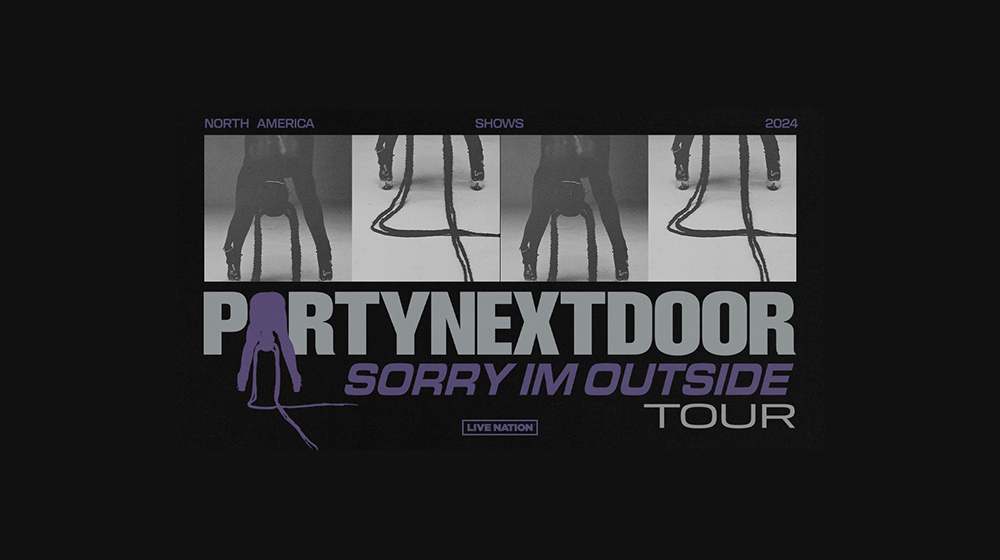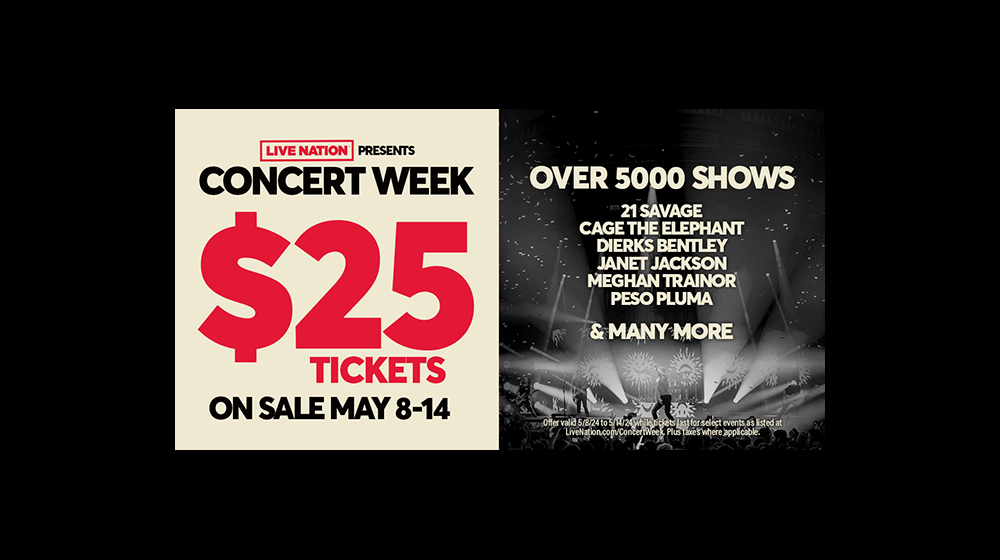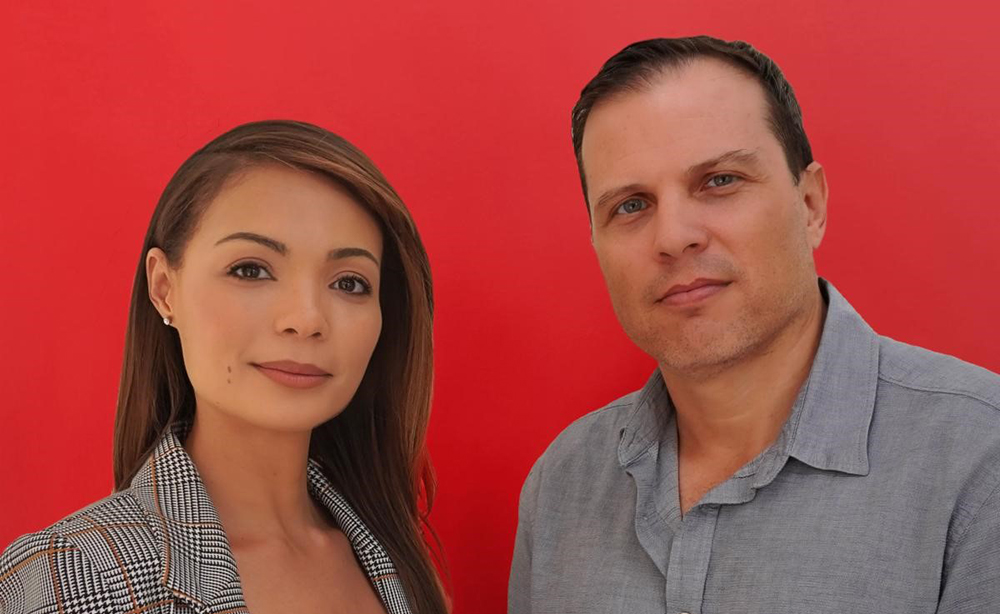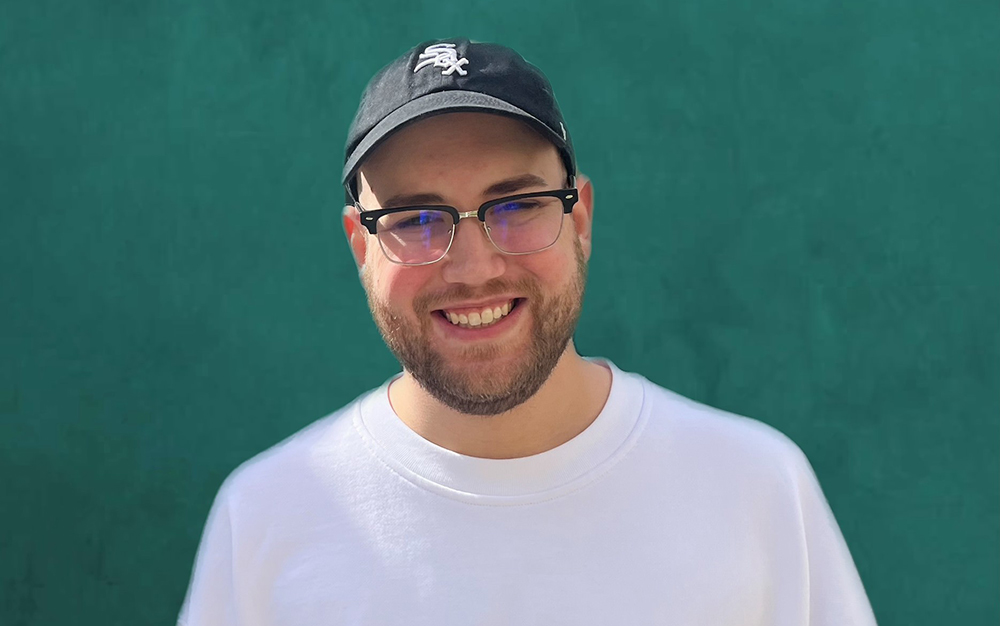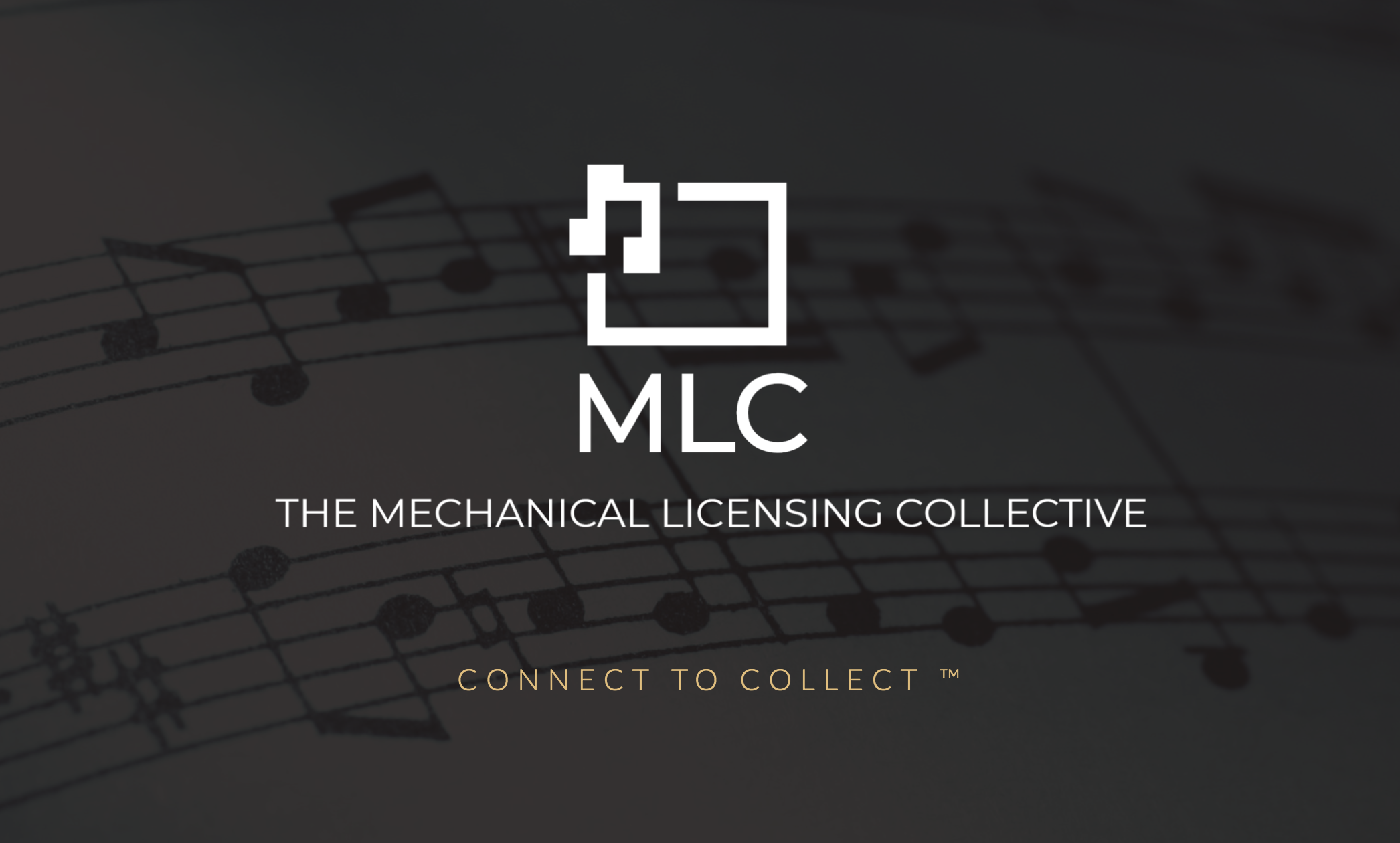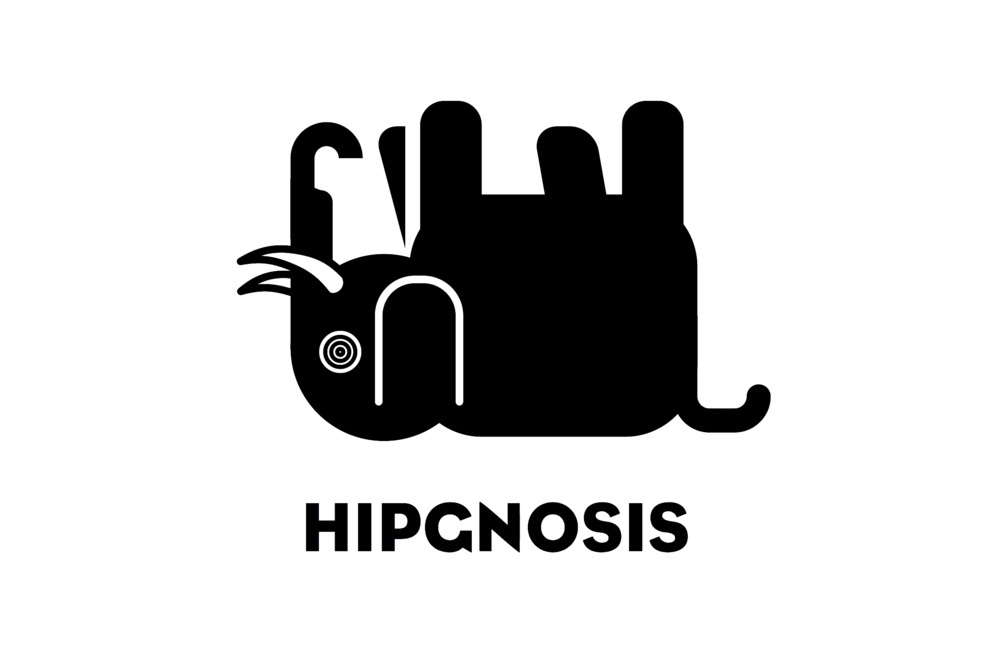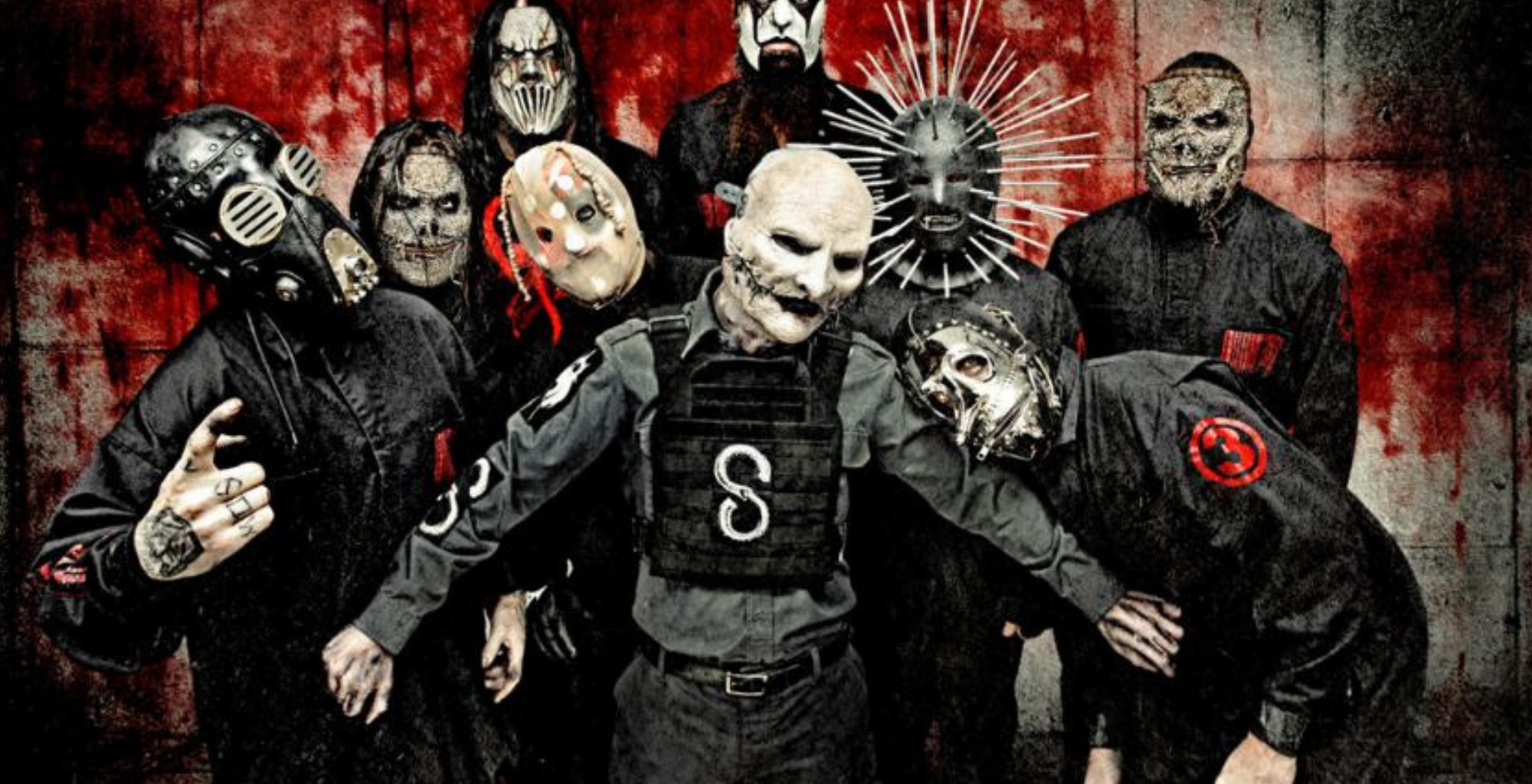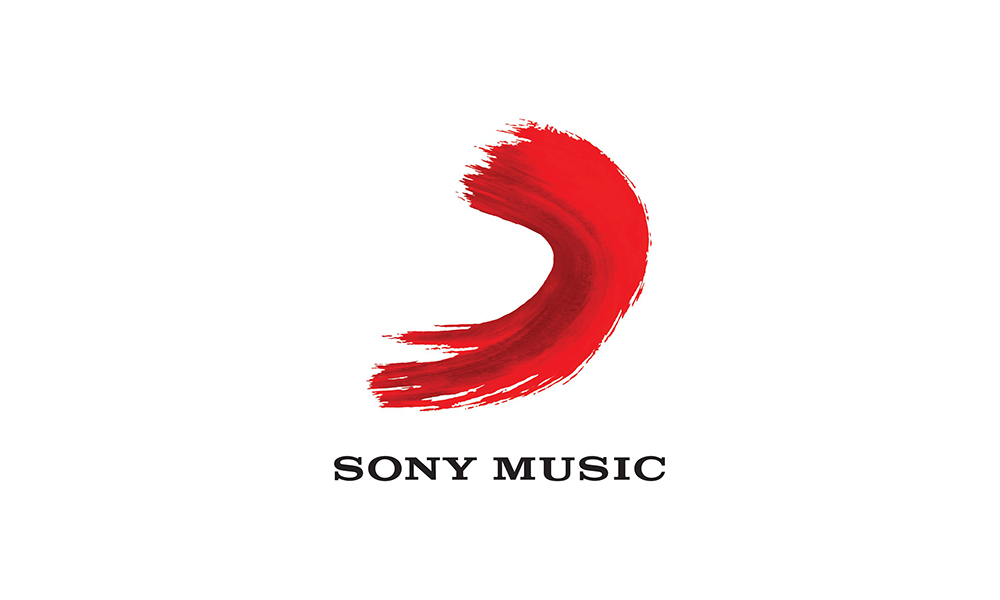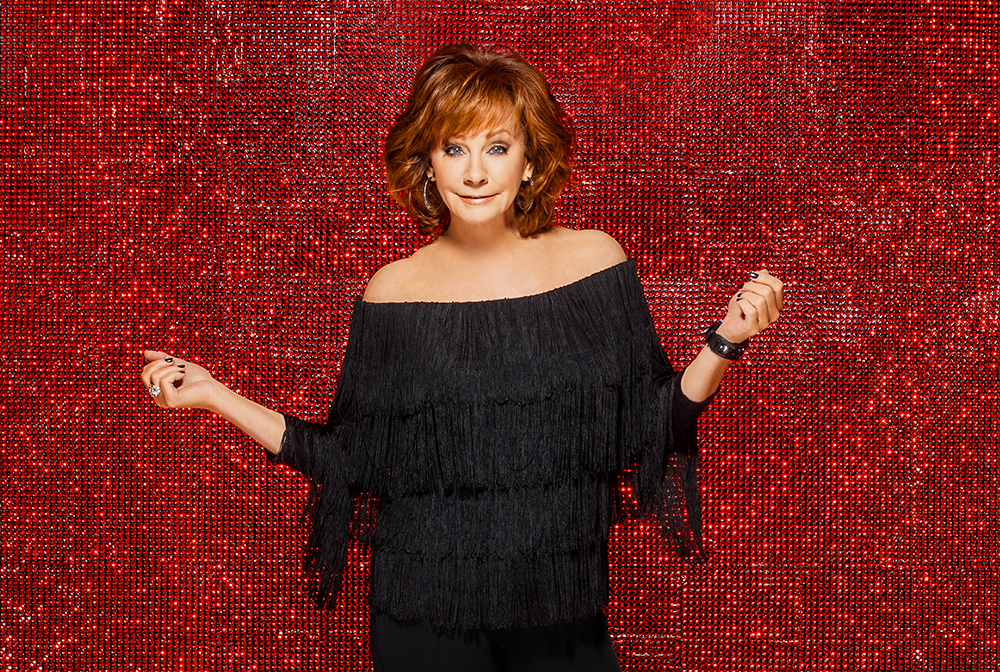This week In the Hot Seat with Larry LeBlanc: Nick Fiorucci, owner of Hi-Bias Records, & co-owner of zipDJ.
After plugging in his turntables at the Toronto club hot spot Affairs in the mid-80s, and following his graduation from the recording arts and sciences program at the Trebas Institute, Nick Fiorucci became part of a Canadian movement that transformed dance music.
The Toronto native first established the dance music label Bigshot Records in 1988. The label closed two years later after releasing such pivotal house records as Landlord’s “I Like It,” and Dionne’s ‘Come Get My Lovin’.”
In 1990, Fiorucci and fellow DJ Michael Ova launched Hi-Bias Records, a label that along with a handful of DJ/producer peers like Richie Hawtin and John Acquaviva, Chris Sheppard, Brad Daymond (who passed away in August 2018), Vince Degiorgio, and Derek Brin, elevated Canadian dance music globally while breaking through institutional resistance at home.
As the global and domestic dance communities became aware of Hi-Bias, and as the label brand exploded, Fiorucci honed his skills as a producer, songwriter, music publisher, and label owner; mastering marketing, promotion, distribution and pretty much every aspect of the business
Hi-Bias Records’ catalog includes the works of DJ’s Rule, Red Light, deadmau5, Luca Debonaire, Block & Crown, Stonebridge, Adam K, Hatiras, MC Flipside, Goldtrix, The Uprising, Temperance, Rachel Starr, The Ones, Oval Emotion, Shauna Davis, Taras, Etienne Ozborne, Matteo DiMarr, Deko-ze, Groove Sector, Willow, Eyes Cream, Z-Formation, Soup, Fellows and many others.
Also featured among the label’s lauded compilation series are licensed tracks featuring David Bowie, David Guetta, Modjo, Frankie Knuckles, Company B, Afrika Bambaataa, Chaka Khan, Company B, Little Louie Vega, Nightcrawlers, Ten City, Duran Duran, Dead or Alive, Culture Club, Tears for Fears, Marshal Jefferson, Sugar Hill Gang and Above & Beyond to name a few.
Meanwhile Fiorucci, often tapped for prestigious remix projects, has overseen dance releases by such artists as Britney Spears, Katy Perry, Celine Dion, TLC, Eiffel 65, Laura Pausini, ATB, Michelle Branch, Sam Smith, Brandy, Masters At Work, M-People, Single Gun Theory, Kristine W, Urban Cookie Collective, Hillsong United and many others.
For the past 12 years, Fiorucci and ex-Sony Music Canada dance executive Kevin Unger, have operated the digital record pool, zipDJ. As well, Fiorucci’s global radio show and podcast ALL HOUSE (formerly zipCAST) in now its 7th year.
At this year’s Canadian Juno Awards, Fiorucci received the award for top dance recording 2018 for the remix EP of “Closer” featuring Laurell.
I remember you spinning records at the Toronto club Affairs in the late ‘80s.
Yes. You actually remember?
You weren’t part of the first generation of premier Toronto club DJs that included Wally McDonald, Greg Howett, Gord McMillan, and Don Bell; you were of the generation that included Chris Sheppard, Derek Brin, Brad Daymond, and Vince Degiorgio.
That’s right.
Does it surprise you that it’s been 28 years since you launched Hi-Bias Records?
It’s unbelievable. The seeds of Hi-Bias, first as an artist alias, was sown when I befriended another DJ at Affairs, Michael Ova. Michael and I became production partners. We’d create special edits and mixes which started a buzz amongst the regulars and patrons as they couldn’t hear those mixes anywhere else.
How did you come up with the Hi-Bias name?
Honestly, it was something that is a knockoff of the (the quality of) cassette tapes which were high bias. High bias tapes were high quality. That meant they were better quality than normal bias. So we shortened it and came up with Hi-Bias, and that really just meant high quality for us.
How many releases has Hi-Bias issued?
Hi-Bias has in the range of 4,000 to 5,000 masters plus remixes on top of that. The 25th-anniversary album was a hard thing to compile, for sure. A lot of the stuff was older material because there was this whole gap of commercial stuff when I was more focused on Canada. My whole focus changed. I kind of lost what I got into this business for. I became more of a business guy running a label as a business. Signing artists and licensing tracks. So it went more of a commercial slant for the label including my sound as a producer. That’s when artists like Temperance projects came around.
A record like “Dancing In the Key of Love” by Temperance featuring Lorraine Reid from 1998 still stands up.
Yeah, it’s a great record. The thing is that times have so changed. I have looked at remaking some of those tracks now, but the world of songs has changed, and the use of melodies. It’s a different thing today. I have been DJing since ’85. That’s what really keeps me in tune with everything. These days for some of my residencies I have to play open format music like trap (a distinct style of hip hop music), and Top 40. But I’m a house music guy at heart.
Canada’s dance status soared in the early ‘90s with a generation of Canadians who traveled a similar route as you, including EDM pioneers Richie Hawtin and John Acquaviva and such dance trailblazers as Chris Sheppard, and Vince Degiorgio. As well there was an explosion of dance compilations from BMG Canada (largely compiled by Degiorgio), and by Quality Special Products spearheaded by Marcus Klinke.
Oh, the units that they were pumping out. It was insane. Chris Sheppard put Canada on the map (with BKS and Love Inc.). He made it (his career) an international thing which I wasn’t able ever to do. I tried. Other than with my residencies like Affairs and Misty’s which were incredible clubs to play. Of the many clubs I’ve played, I still think of Affairs. Wow! When I would drop a record there the entire place would go crazy. The bartenders and the door staff, they would hunker down because they knew that when the needle dropped down on “It Takes Two” (1988) by Rob Base (and DJ EZ Rock) people would go ballistic. They’d flood the dance floor, and everybody would go nuts. I have never experienced that vibe since. I have played some great places, and I still do. But the biggest record of the day, I’ll drop a Drake record, I still don’t get that feel that I did back then.
(According to music critic Stephen Thomas Erlewine of the All Music Guide, “There are many critics and listeners who claim that Rob Base & DJ EZ Rock’s ‘It Takes Two’ is the greatest hip-hop single ever cut. It’s hard to disagree with them.”)
You started Bigshot Records earlier with Andrew (“Komix”) Komis right?
Yeah, with Andrew in 1988. One of the early releases on Bigshot was under the name Hi-Bias which was me and Michael Ova. Andrew and I had met at Affairs. I was DJing there, and he heard that it was a happening place, and he came. He had this track that he wanted me to play. He brought me a cassette that he’d done. That’s how we became friends. I played it off the cassette. I liked it. It was a house record.
Were you doing any production work then?
I was doing re-edits, and little remixes, putting some added beats and stuff on things like Janet Jackson records. I came from a background where I had some guitar and music lessons, but I always gravitated toward the electronic side (of music). I loved drum machines. I played guitar, played some piano, took some accordion lessons, but it wasn’t my thing. I loved the electronic things. So I bought a little mixer, and I bought a little drum machine, and a keyboard and I started doing remixes and re-edits of all of these popular records. We would take these records, like a Janet Jackson record, take the album version, and make it into a different version. People at the club would ask, “Where can I get this?” I was selling tapes there. I was selling $20 cassette mixes. There would be a line-up of people. But more importantly, it got to the point where they wanted to know what we were doing; so we started to publish a weekly chart from the club.
Meanwhile, Andrew and I started playing each other records. One day he said, “We should do something together,” and I said, “Sure.” That is when we started Bigshot as a label. We had these ideas for these tracks, but we tried to shop them here (in Canada) but there really wasn’t any independent labels. It was before (American house-music record label) Strictly Rhythm and others. You’d send music to a major (label), and you’d get a rejection letter, “Thank you, but no thank you.”
As dance music began to evolve from the disco era, there was considerable institutional resistance to rhythmic-based urban and pop music which was happening in clubs largely in Toronto and Montreal. Canada’s music industry cold-shouldered the dance community, Canadian radio shunned dance records for years, and major labels in Canada largely didn’t know what was going on.
No, they didn’t know. Basically, Bigshot was born as an outlet to put out our own productions. We got a bit of money to press up some vinyl, and we did the smallest runs possible. It was like, “Okay we’ve got this record how am I going to sell them?” So we go to the downtown (Toronto) shops like Starsound and we’d sell some out of the back of our trunk. We’d go to Monica’s out on Eglinton Avenue that primarily sold reggae records. It used to be a hair salon, and in the back, they had a little dance record thing where they would sell reggae (and dance) records.
When you were starting out, it was a pivotal period for dance music. New York DJs Larry Levan and François Kevorkian had introduced the dub aesthetic into dance music by experimenting with drum machines and synthesizers in productions and live sets, ushering in a ground-breaking electronic, post-disco sound with Americans like with Juan Atkins, Derrick May, Kevin Saunderson and others that led to the glory days of British techno and house.
It was unbelievable actually. I remember going to my first visit to London, England and some of the Bigshot records were being played there. After a late supper, journalist James Hamilton brought me to the club night Sin at London’s Astoria Theatre. He was a respected old-time journalist who was the dance music guy at Record Mirror which was like the Bible of dance music then. He was an older gentleman than me. I was in my 20s.
(The Record Mirror disco column began in 1974. James Hamilton, who had been writing about American soul and R&B for Record Mirror since 1964 originally as Dr. Soul, took over the column in 1975, and it was expanded into a general dance music section known as BPM. Hamilton had started DJing at Soho’s The Scene club in ‘65 and then worked in New York. After seeing resident DJ Larry Levan play at Paradise Garage in the Hudson Square neighborhood, Hamilton returned to the UK, a convert to mixing records, largely unknown at the time in London. Hamilton passed away in 1996.)
Club night Sin at London’s Astoria Theatre is considered one of the first legal acid house club outlets in the UK.
It was basically off a back alley in the Charing Cross area of London. James is driving an Austin Mini, right? A tall fellow. I’m 5’ 10,” this guy was like a crazy 6’ 5” or 6’ 7” something like that. So here is this huge guy driving an Austin Mini. I am finding it all hilarious. I had never been there and we are driving through these little winding streets. We are going through the hallway and the back way, and suddenly I’m onstage and there were people like Nicky Holloway, Pete Tong, Danny Rampling, Johnny Walker and all of these legendary DJs onstage. I’m staring out there, and there’s 2,000 people going nuts, and my record dropped. I think that it was Jillian Mendez’ “Get Up,” and they also played Dionne’s “Come And Get My Loving,” and the crowd went ballistic. I will never forget that moment. I still get shivers thinking about it. it was one most inspiring moments of my life.
Other highlights for me include being on the same bill as Carl Cox spinning at the legendary Haçienda club in Manchester alongside Graeme Park and Mike Pickering; performing at the club Heaven in Charing Cross in central London with resident Paul Oakenfold; headlining and having a label party at Ministry Of Sound; playing in Switzerland alongside Tony Humphries; and in Stockholm with David Morales, and so many more.
Your Landlord dub track “I Like It” is regarded as one of the founding tracks of British rave
It was the anthem at Hacienda with DJ Graeme Park. It has been sampled more times than I can count including Soundfactory’s mega-hit “Understand This Groove” (1990).
Being in Britain as techno and house were blowing up must have been a memorable experience.
Yeah, it was an unbelievable experience, and it (music) was not only in clubs but everywhere you went from on the streets where you’d walk into clothing stores and you’d hear music playing. A hit was a hit. Dance music was big. Soul II Soul and Inner City were the two in that era. But dance music was everywhere that you turned. A hit was just magical. You felt it in the air. It was all over.
In the 90s, if a song was a hit, it would be completely widespread. Everywhere you turned you’d hear the record; whether it be on the radio or in a club or in a clothing store or in a grocery store. There was no denying a hit record as the impact was felt everywhere. Today, things are different. What may be a hit on the radio is not necessarily what’s the most streamed song is or what’s played on satellite radio or the internet. It was unbelievable how it has changed. Now Beatport (the American electronic music-oriented online music store owned by LiveStyle) is like the Bible pretty well with having the dance music chart for the world. Records are on for two or three weeks, and that’s it. They are gone. There are a few that stick that become hits, but it’s few and far between. It’s not the same way as it was.
Having your productions embraced outside Canada must have been a moment for you.
It was unbelievable. I can’t describe it. I was being interviewed on KISS-FM in London (that specializes in hip-hop, R&B, urban, house, pop and electronic dance music). One of the things that I will never ever forget is being interviewed at pirate radio LWR (London Weekend Radio) which was a huge station that helped the explosion of dance music and rave culture. They actually took me onto a boat to this pirate radio station that was really popular back then. I remember that it was with Jazzy M who they consider the UK Godfather of house. He was running a shop called Vinyl Zone back then (from 1983-1990). They took me out onto a boat to do this pirate radio show interview that was broadcast live. I also did a series of British gigs. I couldn’t believe it. From that point on it was like—I knew I wanted to do this but it was like, “Okay, this is my thing. The UK became my biggest market in the early ‘90s. Mind you, it was the dance music capital really for the world.
(Acclaimed for his mid-’80s house show on London pirate station LWR, Jazzy M, aka Michael Schiniou, worked at and later owned a record store (Vinyl Zone) devoted to selling the hard-to-find Chicago house imports. Through the store, he released Orbital’s debut single “Chime,” and founded the Jumpin’ & Pumpin’ label, an imprint of Passion Music Ltd., which was the first home of the British electronic group Future Sound of London, among others.)
What did you initially do for distribution for Bigshot?
I would sell to the shops and because I was buying vinyl at the time. I would look at the side of the boxes and go, “I gotta figure out where these guys are getting their records.” So I was looking, and it would be like Unique Distribution, and Watts Distribution from New York City. So I jotted down the information on the side of the boxes from Starsound, and then I would call these guys in New York. This was literally was how the label was born. I figured out these guys from Toronto were buying records from New York, and I wanted to be in touch with those people. So I did. You’d play the record to them on the phone and they would give you an order. Suddenly, I was shipping records to New York. With shipping to these New York outlets, we were suddenly getting orders, and it went viral, basically. They were shipping to England, all over the world, but England took note, and suddenly we were getting orders from there. It was like 1,000 coming through on a fax order, and then 3,000 coming through. We didn’t have the money. We didn’t have terms with the pressing plants. The shipping was killing us to get records to New York. We finally found an American plant, but we didn’t have the terms. They wanted money upfront or we had to pay within a certain time.
Bigshot only lasted two years. What happened?
We ended up bringing in a third partner in1989 as a money partner and everything soured from that point on. I was stuck in the studio 15 hours a day. I’d sleep there overnight. And this guy wanted to run the business. I had established some distribution. Eventually, Andrew took off to New York. He had it with this whole thing. He left me here, and I dealt with Bigshot for another year, and then Michael and I started Hi-Bias.
The first Hi-Bias release was “Get Into The Music” in 1990 under the moniker DJ’s Rule.
Correct. DJ’s Rule was Michael and I. “Get Into The Music” went to #1 on the dance chart in the UK. It was a big record. It was playlisted on heavy rotation on KISS-FM there. It was on the chart for something like 7 weeks. Sadly Michael passed away in 1993. We were just getting into things, and this came about. I had to keep the thing going and I did.
What was the reasoning behind all of the different mixes of tracks back then? Like having numerous club mixes, a radio mix. and so on?
Back then, it was more popular. Now I’m releasing singles with one mix. I’ve gone full circle to times where like a disco record you had the one extended version and the dub. I was very much about that. The whole remix thing was mostly a UK and a New York thing where they would get bigger remix names; where they would get a Little Louie Vegas or a Masters At Work mix, and get David Morales to do a remix. They would have a bunch of Hex Hector and Thunderpuss remixes. So we started to do remix paks so we would have different sounds. One would be a little more house. Another would have a little more of a techno flavor or be more commercial. But I was really much against that. To me, the record is the record.
You are at heart an AM radio Top 40 guy.
I am. I like a song. I like the songs that we were doing. Like with (Temperance’s) “Dancing In The Key of Love.” Verse, chorus, tag, and then bridge. Now, it’s hard to do that. I struggle some days to hold myself back from doing melodies because they don’t want that. Now it’s like a loop, a feel, a great bass line, a build, and a drop and an extro. There you go. There’s your record.
Your label business is just you these days, right?
Pretty much. I have a some freelance and promotion people who help me. At one time we were up to about 10 people. I had a full-time UK representative, Jackie Khan, running our UK Hi-Bias office who is still around. She got me the first DJ’s Rule tour there in ’91 or ‘92. Michael and I did a tour across England and guess who our lead singer was? Deborah Cox before she got signed to Arista in 1995.
In developing Bigshot and Hi-Bias, you had to not only produce music but you had to build and finance a studio. That wasn’t a cheap undertaking at the time.
I invested probably $30,000 or $40,000 in the studio in my late 20s. Partly money I had saved up, and partly money that my parents lent me. Andrew and I also got a business grant, and we bought more gear, Today, I probably have a quarter of a million worth of gear still. I’m an analog fan. I’m a gear junkie, but I can’t bring myself to sell something on Kijiji for $200 that I paid $2,000 for. If I turn it on once every year, if I use it for one little piece of my music, it’s good and I’m going to keep it. Yeah, I collect all of this gear. You are absolutely right. Back then, you had to invest money. You needed tape machines to run your two-track masters. You needed a mixer which would cost in the thousands. You needed all of that stuff. Today, it’s run on a $1,000 laptop, and everything is there.
What equipment do you mostly use today?
I am very much digital. I’m a Logic (Pro) producer on Mac, but I use a lot of plug-ins, obviously internally, but I still use my Roland Juno-106s. I still turn them on and use a Korg M1 (the 6-voice, 8-part multitimbral sample-based synthesizer and music workstation) and all of this stuff. I’ll turn them on once in a while. Not all of the time, but I do. You just can’t get the sound (without them). There are plug-ins that are like digital replicas, and they are pretty good, but they don’t have that warmth, that analog feel that a real piece of gear has. I still mix through my Soundcraft Ghost board which my producer friends think that I’m nuts for using because I have to finish a project, and use faders. I can’t recall it (settings) like they can with a laptop anytime. I’m running through some analog faders. But it forces me to finish a project an then it’s kinda printed. That’s what it is.
Hi-Bias releases by Temperance like “Hands of Time” (1998), “If You Don’t Know” (1999) and “Dancing In the Key of Love,” (1999) strayed somewhat from your house roots but received great airplay on radio as well as in the clubs.
Vince Degiorgio, while at BMG Music Canada, was the first guy to give me break in Canada, actually. He recognized what we were doing. I was happy with what we were doing overseas. He gave me the first national distribution deal with BMG (Canada) when they started doing compilations. It kind of changed the trajectory of Hi-Bias in a way. I’m not sure that it was a good thing because I was on my path doing singles and getting recognized overseas, and then suddenly having a major label national distribution deal, we had to be more commercial. Compilations were the thing back then, and we were doing more commercial things, and licensing in product and all of that.
Many of your tracks then could easily be adapted to radio.
That’s also because I’m a song guy. There was a time when I worked with singers where I was making the song, I was writing the song, and I was doing everything with the song.
Earlier Vince had enormous international dance success with Tapps, and domestic success Eria Fachin on his Power Record imprint. Hired as a dance music and marketing consultant at BMG Music Canada in 1991, he developed such top-selling dance compilation brands as “Club Cutz” and “Groove Station” that racked up sales of over two million albums.
Exactly. That is exactly the era. One of the first things that he did was that he brought Hi-Bias there. From there I went to Polydor (a division of Polygram/Universal), and Warner Music, and then to Attic Records with (co-founder and president) Al Mair who gave me a deal. He was one of the few independents or labels that saw something in electronic music.
Vince also broadened the dance music market for international acts in Canada. Many international dance records then had their start in North America in Canada rather than in the U.S. including Snap’s ‘Rhythm is Dancer” as well as “Happy” by Legacy of Sound featuring Meja, Dr Alban’s “It’s My Life, Ace of Base’s “All That She Wants,” Real McCoy’s “Another Night,” Haddaway’s “What Is Love,” and La Bouche’s “Sweet Dreams.”
Yes. So Hi-Bias changed its path. I started being an A&R guy licensing records in as opposed to just licensing my product out.
Compilations became synonymous with Hi-Bias with collections such as: “House Nation,” “Old School Nation,” and ‘Retro Active: Rare & Remix’ featuring the works leading artists as David Guetta, Frankie Knuckles, Modjo, Company B, Afrika Bambaataa, Chaka Khan, Little Louie Vega, Nightcrawlers, Ten City, Duran Duran, David Bowie, Dead or Alive, Erasure, INXS, the Cure, New Order, Culture Club, Tears for Fears, Marshal Jefferson, and Sugar Hill Gang to name just a few.
We would get the Canadian rights or sometimes the North American rights for tracks. For some big records. We signed Disco’s Revenge and Gusto, and we had the track “Trippin’” by Goldtrix which was a massive record. “Running Up That Hill” was a Kate Bush dance cover by Elastic Band that was big. At the same time, we also developed Temperance, and Oval Emotion. All of this changed the scope of the label making it more commercial but, unfortunately, it changed the sound of Hi-Bias. So the appeal from the UK diminished. It was like, “What happened? Hi-Bias used to be this cool house label.”
The first time I had heard of David Guetta was Hi-Bias’ David Bowie Vs. David Guetta’s “Just For One Day (Heroes)” extended release version in 2005.
David was a house DJ much like me. He was at parties playing my records in France. I’d keep my eyes and ears open for up-and-coming guys that were doing stuff out of Paris. I heard about him through his parties, and the house things that he was doing. He’s the real deal. Artists like David Guetta changed the landscape of dance music helping it cross over from the underground to mainstream. He was a supporter of our label in the early 90’s as a DJ when he was hosting his own club nights in Paris. In 2005, we released one of his songs, “Just for One Day (Heroes)” vs. David Bowie, on our “Retro Remixed Rare & Refashioned” compilation.
Over the years you have done substantial remix work featuring such hit acts as Britney Spears, Katy Perry, Sam Smith, Celine Dion, TLC, Eiffel 65, Laura Pausini, ATB and Michelle Branch. Do their labels come to you for your remix services?
Yeah, I still have contacts with the A&R guys that are doing these remix packages. The sad part of that business is that it has become all spec. They expect you to do the work for free, and if you get chosen you get paid. I’m like, “You want to hire me, hire me.” Also, the fees have gone down substantially just like everything else. They will spec out 20 mixes by all of these up-and-coming producers, and they will pick the best three, and then pay those guys. It’s crazy.
But you have been very successful in this specialized field.
Yes, I have had some good mixes like my (2004) remix of Britney Spears (“Everytime”) became the lead off single of that song in Europe. The original was a ballad that I turned it into a dance record. It made it on her “Greatest Hits” album. Boy, I wish I had a point on that I’ll tell you.
The umbrella term EDM–with its multiple subgenres–is as mainstream as it gets today. It has shifted from its early underground warehouse roots to the big festival main stages, and many DJs are now celebrities.
As I said when I got my national distribution deal with Vince, it changed the trajectory of the label and I wish I had stayed on the path of guys like Ritchie (Hawtin) and (John) Acquaviva who stayed true to who they were. They were doing the music that they wanted. If I had done that I would be headlining festivals much like these guys, but I kinda went commercial and became a label executive signing and licensing.
Over the years how dance music and remixes are delivered to the market has transitioned from 12” inch records to cassettes to CDs—all physical product–which evolved into downloads, and now streaming on various services. How do you make your money today?
Thankfully, I have a deep enough catalog that still generates a pretty decent stream of revenue. I keep DJing because DJing is really my bread and butter. I still play several nights a week. I still remix. I still put out records.
It all adds up. Sadly though, these days the gigs they want to pay me half the price of what I was getting 25 years ago.
Back in the day, you had to invest in considerable equipment to be a club DJ, but today anybody with a laptop and internet access can be a DJ. There are kids in their bedrooms laying down beats, and they are pretty good.
Yeah, technology has certainly changed everything. The scope alone for sure.
Still, back then seeing DJs like Richie Hawtin, Peter Tong, Carl Cox, David Guetta, and yourself in a club was like being in another world. But much of what you all launched has been watered down under the EDM term much as, arguably, the jazz, country and classical genres have been watered down over the years.
You nailed it on the head. I am in a constant battle in a nightclub now with owners who want to pay a DJ just $200. You are right, they (DJs) get their music free online or their laptop. They have no programming experience. I say, “Guys, I’m putting disco records, and old school records into my set,” and people are going, ‘Wow.” I am playing the originals of the things that hip-hop guys have sampled and the crowds are going, “I love this remix,” and I’m going “This is not the remix. This is the original.” It’s unbelievable. Sadly they just don’t get it, but I just came back from Amsterdam Dance Event a couple of weeks ago (Oct. 17-21), and it was a pleasure because they do get it there. It’s always a pleasure spinning there because that city really gets dance music, and the dance culture is felt citywide with a festival and conference that’s grown to over 400,000 visitors from more than 100 countries. I played in some great clubs and one of them was a pub and there were 500 people. They were watching sports, and there was a dance floor and there were some people dancing. But the whole club the whole vibe was so different than anything here. Here it is about bottle service and being seen and taking selfies. There they were just feeling the groove. and enjoying the music.
Why not just go to a club that’s got good music, and a good sound system? And not worry about, “if there are hot chicks there?” Pay one price for a ticket, and enjoy a night of music. Instead, at so many clubs, guys are standing around in their three-piece, suits trying to look cool, drinking back vodka by the bottle, trying to pick up women.
Exactly. And it hurts me, man. Like wow, they just don’t get it. They don’t get this music. They don’t go to a club to dance anymore. They go to a club to be seen and be in a group with their bottle service thing. I’m going to put out a record called “Bottle Service Killed the Dance Floor” because it really did. It changed the scope of nightclubs and all that.
Have you played many festivals?
I used to play a lot of festivals. I stopped because I’m more of a house guy. It’s always been the side rooms, and the side rooms get the bigger names like Carl Cox. So I sort of stopped after having my kids. I still do my residencies. I still do select gigs overseas. But my iTunes Podcast/Radio Show ALL HOUSE, I am really happy with that that after 7 years. I am getting really good feedback. It is topping the iTunes’ podcast charts which is freaking me out. Over top of Joe Rogan and over these big artists. Holy crap. It is getting noticed. Labels and other people are stopping me and saying, “Man, I love your show.”
When you are younger you could do week-long club residencies, but as you grow age you learn where elsewhere you fit in music. While you are an elder statesman of house, your interests have evolved, and you want to keep pushing boundaries. Still, I’d bet you will likely be doing what you are doing now at 70.
I can’t think of doing anything else. This is my life and what my passion is. I can’t imagine anything else. I have always thought about it. The way the music business has been changing I’ve asked myself, “What can I do? What else would I do?” I don’t know. This is what I have been doing for 30 years. I don’t know if I could do anything else.
At the same time have the streaming services and social media benefited you and your catalog in terms of more recognition internationally?
I would say that the reach is amazing. When I look at the analytics now on Spotify and the others I say. “Wow. I’m getting 400,000 streams a month, and I’m thinking, “Wow, this is amazing.” If I was getting that in airplay I would be living in the Caribbean. It’s a totally different world. But at least the music is getting heard. People are listening, and I have an engagement with an audience. So there’s definitely pros and cons. The only way to monetize all that these days is to gig. It’s getting exposure and having fans and getting out there and playing and hopefully having a draw. But while there are definitely things I like about it, there are things that I can’t stand. The money is a fraction of a penny now on these types of numbers.
People can go on iTunes and other platforms and still find such Hi-Bias classic releases as “Small Town Boy,” “Understand The Groove,” “The Night,” and “Be Now.” Also “Don’t Mean Nothing” by Jaicko Lawrence. In essence, your legacy is being preserved and is widely available.
Yeh, I agree. But I miss the old days. It’s that old school thing. I love technology. I’m always on top of things. DJing, even producing, and my sound has evolved, of course. I miss the fact that when I would open a vinyl record and take the plastic off, you could smell the record. You could read the liner notes. Now it is so disposable. You have a digital file. There might be a picture or a description, but it’s here today and gone tomorrow. Onto the next thing.
Click click like with a TV remote, and then it’s gone.
Thirty seconds later it’s gone, yeah.
With no emotional involvement.
Exactly.
Also, there’s simply too much music available.
It’s insane. Even just with my one hour show I’m putting together, I go through thousands of songs to pick 15 records that I play in that hour. It is unbelievable the quantity of music in any given week. I run a service zipDJ which is essentially a digital record pool. I‘ve been running it for 12 years with Kevin Unger. The music, you just can’t keep up. It’s unbelievable. zipDJ receives upward of a thousand promo releases weekly from labels from around the world. It is just overwhelming. Unbelievable how much stuff there is, and so much good stuff falls through the cracks. It is just unreal the quantity of music coming out. There are some fantastic things but they just fall through the cracks because of quantity.
In essence, zipDJ is a digital record pool, an updated version of a traditional record pool?
Yes, it’s an off-shoot of a record pool, exactly. It’s a digital version, but it’s worldwide and it’s fully territorial. So in the past, a record pool would usually be local. Now there’s no territory. It’s worldwide. We have over 2,000 labels that we service to DJs all over the world.
We have tastemaker club and radio DJs, online show hosts, and even program directors.
The Internet allows you to join a global community not only to receive music from different sources but to also disseminate music as well.
Exactly, yes. I’ve always been forward thinking with new technology. I saw the shift coming and started to steer the company into the digital realm even before the late 90s when portable MP3 players started to appear.
Instead of a DJ bringing in crates of vinyl records or CDs, they can bring in tracks delivered by zipDJ.
Well, yes that’s it. If a DJ plays a record, and when someone hears it then they might say, “I love this record.”
People can now use their cell phones to find what song is being played on the air or in a club.
Exactly, yes. That is exactly it. If a DJ plays a record you don’t have to go to the booth now. Before you had to figure out what it was, and a DJ might or might not tell you. Now you have Shazam and SoundHound. You put your phone up in the air and you find out what the track is. Great, you add it to your playlist. It serves as an incredible promotional purpose because it is instant. On my Spotify, Shazam, in fact, is now connected to Spotify. So you can add it (the track) to your playlist right then and there. So labels are getting streams. You are getting the reach so the promotional aspect of what we offer is more important than ever.
With Kevin Unger previously being the manager of dance and urban music at Sony Music Canada from 1990 to 1998, you two would have had a great overview of what was being released, and you two obviously saw a gap in the dance marketplace,
Yes. Physical product was going further down and down, and selling less and less. DJ were migrating to the digital realm; burning their own CDs, and eventually, DJ software started to be introduced where everything was digital. You didn’t need any physical product at all. So now we deliver thousands of new songs every week to DJs around the world. The consumption of music and the reach has become more important than ever because labels are not relying as much on sales now but they need the reach to get exposure for the average person to stream, to get exposed by the music because there are millions of songs coming out every week, On Spotify, you just can’t go through the amount of music that comes out anymore. It’s not humanly possible.
Much of it from independent sources.
A lot of it is independent. It is about rising to the top. An artist getting their tracks heard through DJs is the best promotion that they can get because you are reaching the masses. Whether they reaching 500 people in a local club in the suburbs or whether it is 3,000 people downtown. Combined some of our stats are staggering. I think that it’s 31 million potential listeners we reach monthly between all of the outlets.
When did you start your radio show and podcast ALL HOUSE?
I started the radio show as zipCAST 7 years ago (April 29, 2011). It was literally because I have been DJing for 25 plus years. I’ve always wanted to do a radio show. I started doing it almost as an add-on promotion for our labels where I would take what I thought was the best of music coming in and put it onto a one-hour mix show. This was also a really good tool for our DJs that would also be listening to my show going it is just another way of discovering music. The thing is that it evolved. It started to take on a life of its own. The show itself started to get more and more partners.
How modest was it when you started?
I started with just a one hour show. I would put it out, here’s the link, download it here, check it out, and we put a playlist online. That was it. Now it is on over 30 terrestrial radio stations worldwide, and the podcast has reached #1 in 6 or 7 different countries. Every episode usually reaches Top 10 in the U.S., and the UK. It usually hits #1 every episode (in the U.S., the UK, Canada, Italy, Germany, Australia, and France). It’s on Spotify, iTunes, and Google Play in the podcast section. It does very well. We have over 100,000 subscribers.
You started doing the show every week, but now you do it monthly. Why the change?
I’m so picky on the music that I choose. I don’t like to repeat music. I wanted it to be a show of new music discovery. Even though there were thousand and thousands of tracks available I was being really picky. I didn’t feel that there was enough great music that I felt good about to play in the show. So I started to do it less frequently although now I am getting demand from stations and people wanting it more frequently. So I might go back to weekly.
Why the name change from zipCAST to ALL HOUSE in August (2018?
I wanted to have a name that talks more about what the show is about.
You focus on showcasing house music.
I play all forms of house from deep to tech to funky to disco. Everything really. There’s a bunch of sub-genres of every genre. Even if you take house there’s also tech house. But at the end of the day, Larry it’s all house. It is all disco. Really, at the end of the day, it’s all dance music.
(House music is a style of electronic dance music that was influenced by early to mid-1970s dance music as spun by DJs in such hot spots as Chicago, Detroit, and New York, and eventually Europe; mixing in heavy electronic synthesizer bass lines, electronic drums, electronic effects, funk and pop samples, and reverb. The name itself comes from the Warehouse, the Chicago club while under its first musical director, the late DJ Frankie Knuckles.)
Are your surprised how electronic dance music has evolved into so many different sub-genres?
Yeah, there are a million fragments of electronic dance music. Sadly, the term EDM is considered one of them. It is a certain sound. That big room festival sound that people think that EDM is but that’s not the case. Electronic dance music is the big white umbrella of music made to dance to. Whether it is dubstep or house or trance it doesn’t matter. EDM is all of those things. I think it is because DJs and certain countries have liked certain sounds so they give it a name. Usually, the UK is one of those countries that likes to put a name on various styles.
I’ve known you for years as a studio rat. Still?
Well, yes. That’s where I love to be. Unfortunately, business takes you in a different direction. Now I am pretty much a business developer for DJs. I am developing the new version. I am usually the tech guy behind the scenes and dealing with labels because we have over 2,000 of them and counting, and because I come from a label background it is just my thing, and my mandate really is to meet our label partners and get more label partners.
Have you wound down your label due to these other activities?
No, no. For a while, I slowed down, but now I’m back. My focus became DJing and trying to grow to its fullest potential, and it is still a big part of my focus. I am still DJing now with guys who are 25. I have been DJing longer than they have been alive. The thing is that I feel young. So the ALL HOUSE show is doing well, and production is doing great. I can’t complain.
What part of Toronto are you from?
I grew up in North York, around Jane Street and (Highway) 401, and I now I live in Vaughan (Ontario).
Were you into music growing up?
I was 100%. I grew up listening to my uncle’s disco and rock records. Supertramp Billy Joel, Peter Frampton, and Elton John. Led Zeppelin was one of my biggest bands. It still is one of my favorite bands. Then I got into disco. My older uncle started buying some disco things, and I became this little disco kid.
Did you hang out at Disco Sound of Canada picking up disco releases by Thom Bell, Giorgio Moroder, Pete Bellotte, Tom Moulton, and Jacques Morali?
Oh yeah, for sure. With Vince, and Kevin, and Dominique Zgarka. That was my first experience of dance music and that is still house music. House music is disco. It’s the same thing. This form of music hasn’t changed. In fact, it has gone full circle. Now they are sampling old disco records, and house music sound more and more disco. All the house music is back to that disco sound. Records I was releasing in the early ‘90s. That sound is what is happening now with up-and-coming 20-year-old producers. It’s interesting because I can’t get that sound for the life of me, again. I try, “How did I do that?” It is so basic. But now my sound has evolved so much that I have to try, and reproduce my sound from 25 years ago. That’s so crazy.
Larry LeBlanc is widely recognized as one of the leading music industry journalists in the world. Before joining CelebrityAccess in 2008 as senior editor, he was the Canadian bureau chief of Billboard from 1991-2007 and Canadian editor of Record World from 1970-80. He was also a co-founder of the late Canadian music trade, The Record.
He has been quoted on music industry issues in hundreds of publications including Time, Forbes, and the London Times. He is co-author of the book “Music From Far And Wide,” and a Lifetime Member of the Songwriters Hall of Fame.
He is the recipient of the 2013 Walt Grealis Special Achievement Award, recognizing individuals who have made an impact on the Canadian music industry.






















